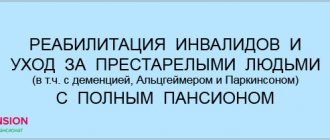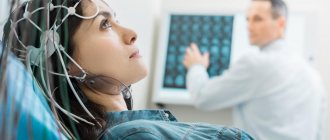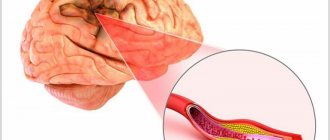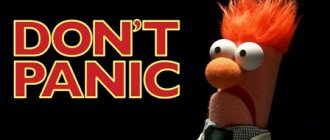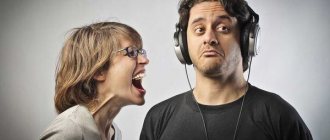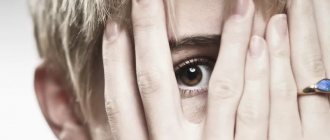Migraine in children is an attack of excruciating headache, which can deprive a child of rest and sleep for a long time, and also sharply reduce the quality of life, psychological and physical condition. The international headache community characterizes migraine as a hereditary disease. As a rule, attacks appear in adolescence, but in children 5–6 years old, headaches are observed more and more often. A timely and competent diagnosis of this disease is made in approximately 48% of cases.
Causes of headaches in children
The prerequisites for the development of migraine are the following provoking factors:
- excessive or insufficient sleep;
- changes in barometric pressure and weather;
- psychological and physical fatigue;
- overstrain of the visual organs from watching TV or from prolonged work at the computer;
- negative emotions;
- consumption of foods with excessive amounts of tyramine (sweets, nuts, citrus fruits, chocolate, cheese, smoked meats, eggs);
- hereditary predisposition;
- heat and stuffiness;
- certain medications;
- some odors;
- driving;
- bad habits.
Why do children get migraines?
The most important cause of migraines is considered to be a computer, or rather, a long period of time in front of its monitor. If this is also added to by watching TV for a long time, then even the nerves of an adult cannot stand it, not to mention a child. Stressful situations in families are also among the causes of migraine. Parents must remember that their squabbles and quarrels should not affect the psyche of their children. Very often, children have problems at school that he keeps to himself, so you should talk to your child about everything that worries him. Another harmful factor that causes migraines in children is the foods they eat. A child may, without knowing it, have something that his body cannot tolerate. Therefore, if migraine attacks appear after eating, you need to reconsider your diet.
Migraine symptoms
It is impossible to determine headaches in children by measuring blood pressure or temperature, since during an attack these indicators remain normal. The test results do not show any abnormalities. An in-depth examination of the body systems and internal organs is also unable to reveal any changes. The disease is characterized by general malaise.
The main manifestations of childhood migraine include:
- pain is localized on one side of the head;
- presence of nausea, vomiting;
- speech and vision impairment;
- increased sensitivity to light;
- dizziness;
- "goosebumps" on the skin, flickering "flies" before the eyes.
Types of headaches in children
Children's migraine, depending on the characteristics and age of the child, comes in different types and types.
Simple migraine
This is a manifestation of a gradually or abruptly onset headache, which is accompanied by pulsation, swelling, aching in the temple area, moving to the orbit and frontal part. As it develops, excruciating pain can spread to the entire area of half the head, intensify from a strong smell, slight movement, any sound or light.
Often the attack is accompanied by cramping or dull pain in the abdomen, tension and soreness in the muscles of the head and body, and nasal congestion. Tinnitus and dizziness also occur. When going to bed, the child closes the curtains. His face and eyes may turn red due to pain, and nausea may appear. A migraine attack may end with vomiting, then severe weakness and sleep. Upon waking up, the child does not feel any signs of illness.
Attacks are not always exactly like this. The pain may not be severe, but the child is quite patient. In addition, it can be so strong and painful that children with suspected infectious disease can be taken to the hospital. The pain can be exclusively in the forehead or in both halves of the head. Severe nausea and lethargy appear, but without subsequent falling asleep or vomiting. Small children cannot explain their condition at all, clutching their heads and crying. Then you should consult a neurologist and undergo a thorough examination.
Migraines with aura
Before an attack, every fifth child experiences a certain aura state - this is a special brain symptom that occurs half an hour or an hour before the onset of an attack. As a rule, this symptom is characterized by various kinds of sensations, but most often these are visual sensations. Children may describe sparkles of different colors, flashes of light, spots in the eyes, or jagged, zigzag, or speckled patterns. They move and flicker, change shape and color. Children also complain of loss of the field of vision or the appearance of blind spots, blurred vision and decreased vision, blurred and blurred objects. These manifestations of attacks are explained by vasospasm, circulatory disorders in the area of the optic nerve and hypoxia of the nerves.
There are sensitive types of aura - a feeling of needles throughout the body, goosebumps, impaired sensitivity in the mouth, tongue, and hands. Such auras can last from 10 minutes to an hour. Then the attack of pain itself develops, which is similar to a classic migraine.
Complicated types of migraine
Complicated forms of headache are classified as a separate group, since in addition to the pain itself, it is accompanied by other disorders of the body:
- migraine with ophthalmoplegia. Headache is accompanied by a disorder of the extraocular muscles - double vision, drooping of the eyelid, dilation of the pupil;
- headache with hemiparesis. The attack is accompanied by movement disorders, one-sided muscle weakness, clumsiness of the leg or arm on the side of pain. Additionally, speech dysfunction and visual aura may appear;
- basilar attack. In the presence of headache precursors in the form of auditory and visual abnormalities, speech impairment, unsteadiness of gait, dizziness, hearing problems and tinnitus occur. There may be vomiting, visual disturbances and loss of consciousness. As a rule, this happens during puberty and intensive growth in girls;
- benign dizziness. A severe attack that occurs unexpectedly and lasts no more than a few hours. May occur in a healthy child without neurological problems. There is no headache. Parents notice that there is unsteadiness and awkwardness in the movements; when walking, the child touches corners. The attack disappears as quickly as it appeared. Between intervals in its appearance, the child’s general condition does not suffer, so during examination it is difficult for a neurologist to detect any abnormalities;
- abdominal headache. Accompanied by causeless abdominal pain, which is characterized by a sharp and unexpected, with a recurring attack of fairly pronounced or mild pain. It can be short-lived - from a couple of minutes to several hours. There are attacks of nausea along with bloating, localized in the area of the entire abdomen or navel, there may be vomiting and refusal to eat. The child is pale, lethargic, often capricious, and his face may turn red;
- cyclic vomiting. This is an unexpected attack of repeated vomiting, which always proceeds the same way. It can be quite strong or weak - a series of 3-4 vomits per hour or over 2 hours, or can be a series for several days. Similar attacks occur in healthy children who do not have any abnormalities. Children feel uncomfortable, they are drowsy, lethargic, with bruises under the eyes and a greenish-pale skin tone. In this case, there are no migraine attacks. Between attacks of repeated vomiting, the child’s well-being does not suffer, so many parents try to find out the cause by visiting different specialists, without thinking about migraine at all.
Diagnosing and treating childhood headaches is much more difficult than adult headaches, since its complications, atypical and severe forms, more often develop in children. Therefore, it is quite difficult to determine the presence of migraine itself, its precursors and trigger factors that activate the mechanisms of headache development.
Migraine symptoms
Migraines can go through several stages. The prodromal phase occurs in every fourth case. A few hours before this, a disturbance in well-being appears. The person becomes lethargic, irritable, sensitive to sounds and smells. Less commonly, unexplained euphoria develops and hyperactivity appears.
The aura phase (noted in 20% of cases) is expressed in the occurrence of additional symptoms:
- visual impairment;
- the appearance of blind or flickering areas in the field of view;
- tingling in fingertips;
- numbness of part of the face;
- confusion of speech.
Neurological disorders may be more pronounced and resemble an ischemic attack. In this case, sensitivity is impaired, a shaky gait appears, and coordination of movements suffers. Less commonly, confusion, stupor, or disruption of the coordination of movement of body parts appears, which indicates involvement of the brain stem in the process.
The headache itself is pulsating and concentrated on one side. The frontotemporal region is most often affected. But the second half of the head may also be involved. The pain increases gradually, intensifies with physical activity, and weakens at rest. It can last from several hours to three days.
Phono- and photophobia is often associated; loud sounds and bright lights intensify headaches. Therefore, they prefer to be in a dark room in complete silence during an attack. Painful sensations can spread to other parts of the body. Migraines may be accompanied by pain in the neck or scalp.
Cephalgia is often accompanied by nausea, frequent urination, and sweating. Children experience digestive disorders. In older people, the number of accompanying symptoms decreases sharply or disappears completely.
After the attack ends, additional time is required to improve well-being. Many people continue to feel tired, fatigued, and have trouble thinking for several days. Some patients who have suffered a severe attack describe their subsequent state as feeling like a hangover. Disturbances in the functioning of the digestive tract and emotional disorders may persist. Sometimes low mood resembles depression.
Less commonly, after a migraine there is a surge of strength and a feeling of euphoria. How you feel may change with each attack.
Why is migraine dangerous?
Headaches themselves are quite difficult for a child: he cannot perform normal activities - walk, study, do creative work. Attacks of excruciating pain put him to bed for a long time, giving neither him nor his parents peace. The child asks for help, cries, but nothing helps him. More dangerous conditions and diseases can be hidden under the headache, while the diagnosis of migraine itself is established in the first couple of months of attacks in no more than 10% of cases. Many parents themselves unsuccessfully treat their children, triggering and significantly complicating the disease even further.
Children's headache is not a harmless disease that periodically arises and passes. It can result in depression or serious consequences, one of which is migraine status. This is a rather painful and prolonged attack of headache or a gradually occurring paroxysmal pain that continues and progresses for several days. The attacks become uncontrollable, no medications help. As a result of constant vomiting, which dehydrates the body, the condition worsens significantly.
The dilation of cerebral vessels causes a strong filling of the cerebral vessels with blood, which causes cerebral edema and oxygen deficiency. The result is an increase in intracranial pressure, which can cause loss of consciousness and seizures.
Another serious complication of migraine is a stroke of migraine origin. Such an attack begins as a simple headache with or without an aura, but then awkwardness and weakness appear in the leg and arm. The attack passes, but paralysis and paresis, along with gait disturbances, choking while eating, slurred speech and double vision remain.
An MRI examination can detect damaged and dead areas of brain tissue with impaired blood flow in the area of hemorrhage. Such damage is restored within a couple of months, but cysts can last a lifetime.
Causes
During adolescence, migraines can develop as a result of the following factors:
- lack of sleep;
- hormonal imbalance;
- menarche in girls;
- music too loud;
- overwork of the body, both physical and mental;
- stress;
- acclimatization to new conditions;
- spending long periods of time in front of a computer monitor;
- very bright light;
- poor nutrition;
- smoking;
- drinking alcohol;
- taking certain medications;
- long journey.
A child has a migraine attack: what to do?
When an attack occurs, the child must be placed in a horizontal position. It is better to darken the windows in the room, turn off light and sound sources, and also provide fresh air. In case of severe nausea, it is advisable to relieve the condition by inducing vomiting. During an attack, sweet tea and sleep will be helpful.
In addition to undergoing a course of osteopathic treatment for childhood migraines, parents should follow several simple recommendations that will help reduce the risk of developing new attacks in their child:
- do not limit the child’s contacts with peers and other people;
- Explain to the child what the disease is;
- maintain a daily routine;
- exclude (or reduce to a minimum) foods such as salty foods, preservatives, chocolate, citrus fruits, nuts from the child’s diet;
- avoid excessive loads;
- limit the child’s presence near the computer;
- replace medications that can cause an attack;
- use personal hygiene products without fragrances;
- If a child has bad habits, try to rid him of them.
Disease prevention
First of all, parents need to pay more attention to their child’s lifestyle, even if he has had at least one migraine attack. It is necessary to take measures to ensure that the child adheres to the daily routine and nutrition, to minimize the child’s emotional and physical stress in order to prevent overload. Try to ensure that your child spends more time outdoors, shows sufficient physical activity, and spends as little time as possible in front of the TV, smartphone and computer screen.
Be sure to contact a specialist for medical help if your child has:
- migraine attacks occur more than 3 times a month;
- the disease has a noticeable negative impact on his daily activities;
- attacks of the disease become more severe and longer lasting;
- concomitant pathologies, for example - obesity, sleep defects, seizures, anxiety-depressive disorder, attention deficit hyperactivity disorder.
Kabardiev Alimkhan Arslanovich, pediatric neurologist at the “Healer” medical clinic in Khasavyurt.
Osteopathic methods in the treatment of migraine
Drugs that are used to relieve headaches only help the child get rid of the pain itself, while the cause of its occurrence remains.
Osteopathy, an effective method of therapy, can solve this problem. As a rule, patients with headaches turn to an osteopathic doctor in extreme situations, after they have tried all possible treatment methods. Thanks to osteopathic methods, you can get rid of attacks quite quickly without the use of medications.
Before treating migraine attacks in children, an osteopath during examination evaluates the structural changes that caused the formation of dysfunction and selects the appropriate osteopathic technique.
Craniosacral therapy is considered a fairly common and effective technique in the fight against migraines. Its essence lies in recognizing the importance of the system of the same name for the normal functioning of the body. It consists of the spine, the membrane of the brain and spinal cord, the sacrum and the skull. The main link is the cerebrospinal fluid.
Osteopathic treatments for migraines are aimed at restoring spinal mobility and nervous regulation, as well as reducing tension in the meninges. Treatment of headaches in children using the procedure of cranial osteopathy makes it possible to normalize lymphatic drainage and blood circulation, and facilitate the drainage of venous blood.
Osteopathy for childhood migraine allows you to achieve the following effects:
- normalize vascular tone;
- regulate the process of inhibition and excitation in the central nervous system;
- stabilize the functioning of the endocrine system;
- improve metabolic processes in brain tissue.
Taking a course of migraine therapy in children using osteopathy will help the child not only get rid of attacks, but also maintain the functioning of the nervous system in the future.
Migraine prevention
To reduce the likelihood of headache recurrence, lifestyle changes are necessary. If a connection is made with certain trigger factors, it is recommended to avoid them in everyday life. Patients who experience attacks more than 2 times a week are prescribed drug prophylaxis. Topiromat tablets can be used for this; Metoprolol. Magnesium supplements improve the condition of the nervous system.
Physical therapy can help prevent migraines. To do this, work with a psychotherapist is prescribed, and methods of cognitive and behavioral therapy are used. Additionally, massage, acupuncture, physiotherapy and other methods of prevention are used.
Budik Alexander Mikhailovich, neurologist, CMN, chief physician of medical offices 36.6
THERE ARE CONTRAINDICATIONS, BEFORE USE YOU MUST CONSULT WITH A SPECIALIST

